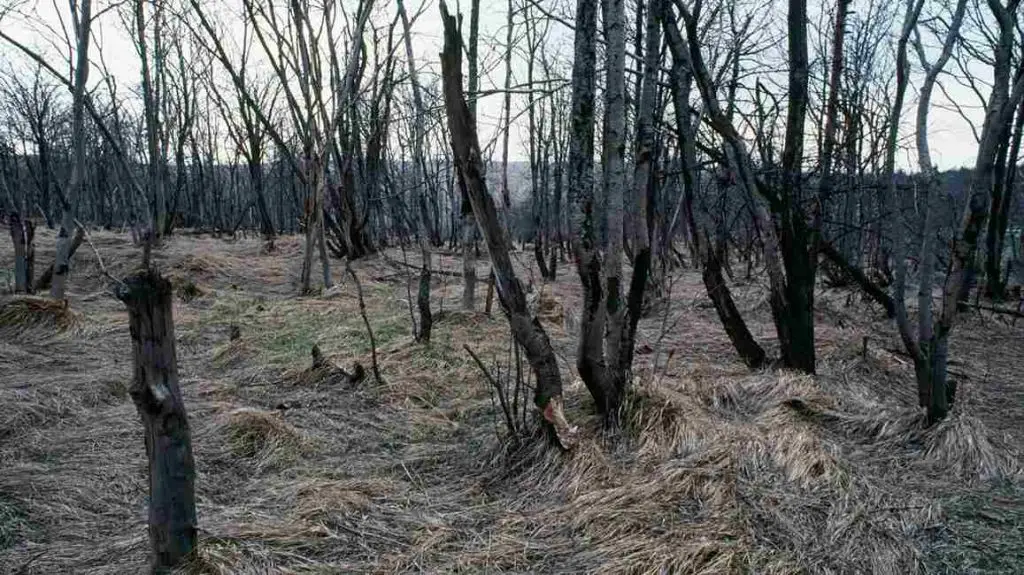Acid rain and acid deposition refer to the same chemical process in the atmosphere. When excess nitrogen dioxide and other chemicals from industrial emissions mix with water and oxygen, they become acidic, forming a weak solution of nitric acid, sulfuric acid, and other acids.
In short, both terms describe rain or snow that is acidic (has a low pH) due to chemicals in the air called oxidants which are released by human activities like burning fossil fuels for heat or electricity.
There are some subtle but important differences between these two terms.
Acid deposition refers more specifically to the phenomenon where gaseous chemical constituents transform into a solid when they react with moisture in the atmosphere and fall as precipitation. Acid rain usually refers to all forms of acidic precipitation: snow, sleet, fog, and rain.
What is Acid Rain?

Acid rain is a type of precipitation that is acidic. This can include snow, sleet, fog, or rain. Acid rain is caused when pollution combines with water in the atmosphere. When certain pollutants are emitted into the atmosphere as gases from burning fossil fuels or other sources, they can be transformed by chemical reactions to form either nitric acid or sulfuric acid. When acid rain falls to the ground, it can damage plants and animals, as well as buildings and statues.
If they are deposited on the ground with rain or snow, they can damage ecosystems and human health. Acid rain can also refer to a phenomenon called “precipitation runoff”, where precipitation that falls on soil containing certain chemicals can cause soil and water runoff to become acidic. Acid rain is mainly caused by oxides of sulfur and nitrogen emitted into the atmosphere from coal-burning power plants and other industrial processes. It can damage forests and lakes, and cause acidification that harms aquatic organisms.
What is Acid Deposition?
Acid deposition refers to the process where chemicals in the atmosphere, like nitrogen dioxide and sulfur dioxide, react with moisture in the air and fall to the ground as rain or snow. This is the same chemical process that causes acid rain. The acid deposition could be described as an event where sulfur dioxide and nitrogen oxides in the atmosphere are transformed into sulfuric acid or nitric acid and precipitate to the ground as rain or snow.
This happens under certain weather conditions, usually when it is very cold or very wet. Acid deposition is often used as a catch-all phrase that refers to all forms of acidic precipitation, including the chemical transformation of gases into precipitation and the chemical transformation of precipitation into acid.
What is the Difference Between Acid Rain and Acid Deposition?
There is not a significant difference between acid rain and acid deposition. Both involve the release of acidic pollutants into the atmosphere, which can then fall back to earth in the form of precipitation. However, acid deposition refers to a broader range of activities and events, while acid rain specifically refers to precipitation itself. There are some subtle but important differences between these two terms.
- Acid deposition refers more specifically to the phenomenon where gaseous chemical constituents transform into a solid when they react with moisture in the atmosphere and fall as precipitation.
- Acid rain usually refers to all forms of acidic precipitation: snow, sleet, fog, and rain. In the context of acid rain, the term precipitation runoff refers to when rain or snow falls on soil that contains certain chemicals and causes the soil to become more acidic.
- The term acid rain is sometimes used interchangeably with the term acid deposition, but it is often used as an umbrella term for both phenomena.
Is There a Way to Reverse the Effects of Acid Rain?
Unfortunately, the effects of acid rain can’t be fully reversed, but they can be mitigated. Reducing emissions from power plants and adopting technologies that control emissions can reduce the amount of acid rain. Other efforts include increasing tree cover in high-risk areas, installing equipment that removes acid from water, and improving soil management practices.
Technologies are also available to remove acid from the atmosphere, including wet scrubbers and dry sorbent systems. To mitigate the effects of acid rain, the EPA has set standards for the number of certain pollutants that can be emitted from power plants. These standards are set to reduce the amount of sulfur dioxide and nitrogen oxides emitted into the atmosphere.
Summary
Acid rain refers to acidic precipitation, while acid deposition refers to the chemical process that occurs when gases in the atmosphere mix with moisture and fall as precipitation. This can happen when raindrops fall through the air that contains sulfur dioxide or nitrogen oxides. These chemicals react with water vapor in the atmosphere to form sulfuric or nitric acid.
The term precipitation run-off is used to describe when rain or snowfall on the soil with certain chemicals causes it to become more acidic. Acid rain cannot be fully reversed, but it can be mitigated. Adoption of technologies that control emissions can help reduce the amount of acid rain.
Additional Contents

